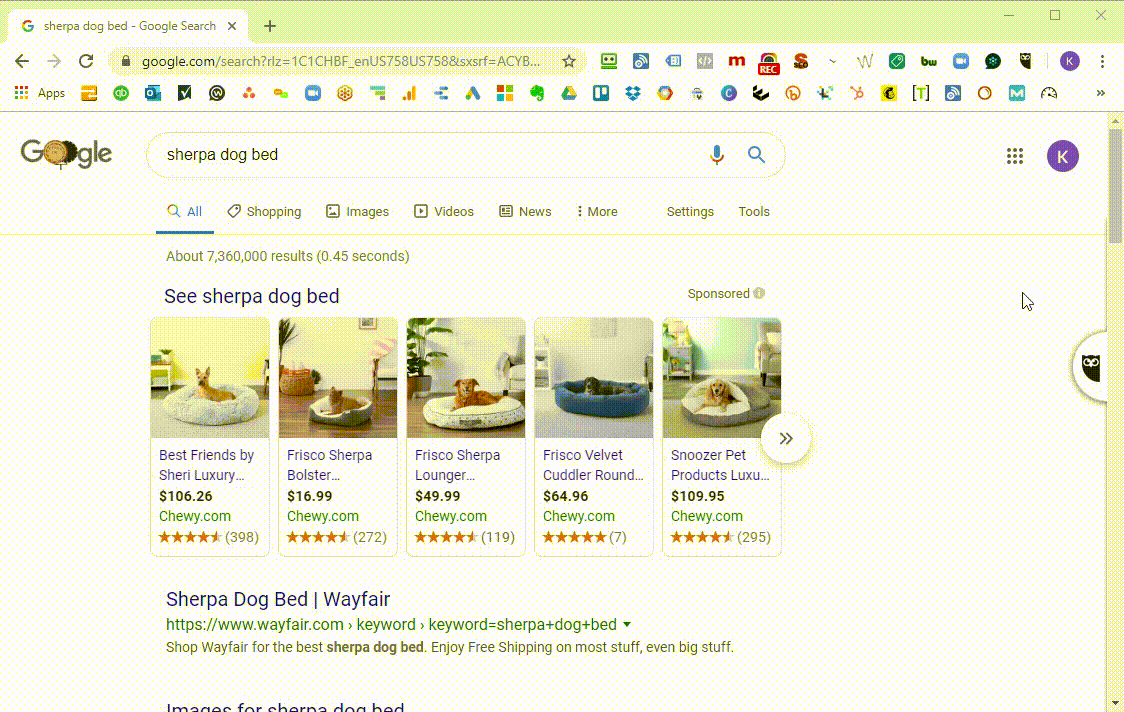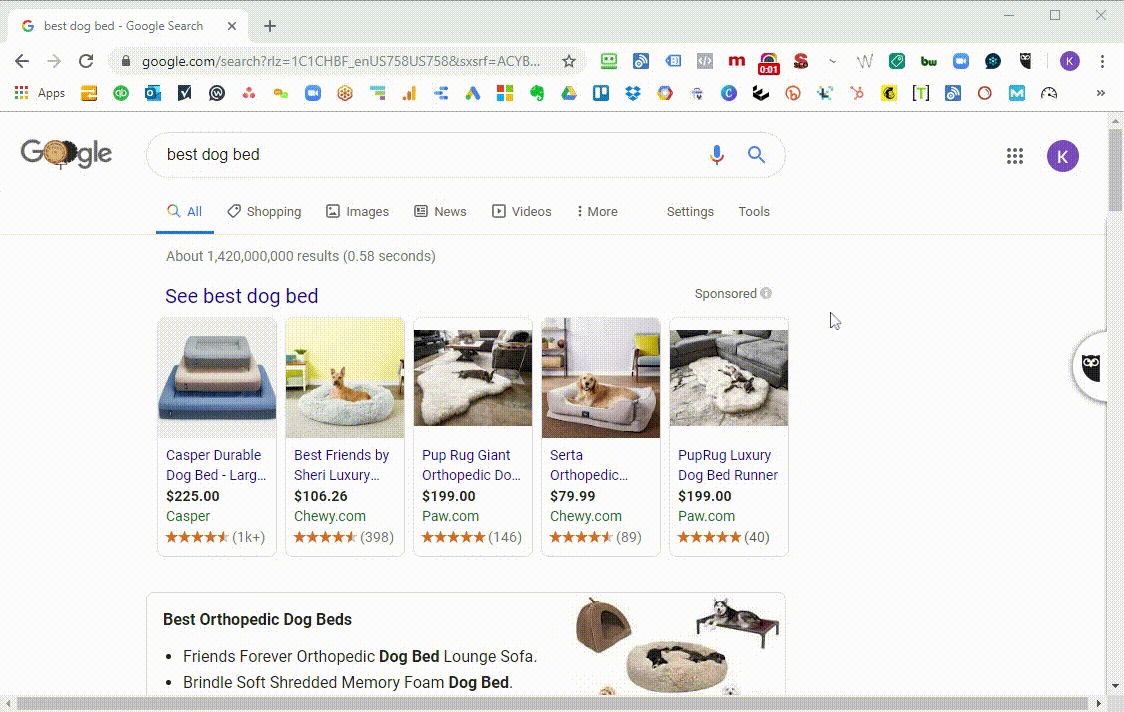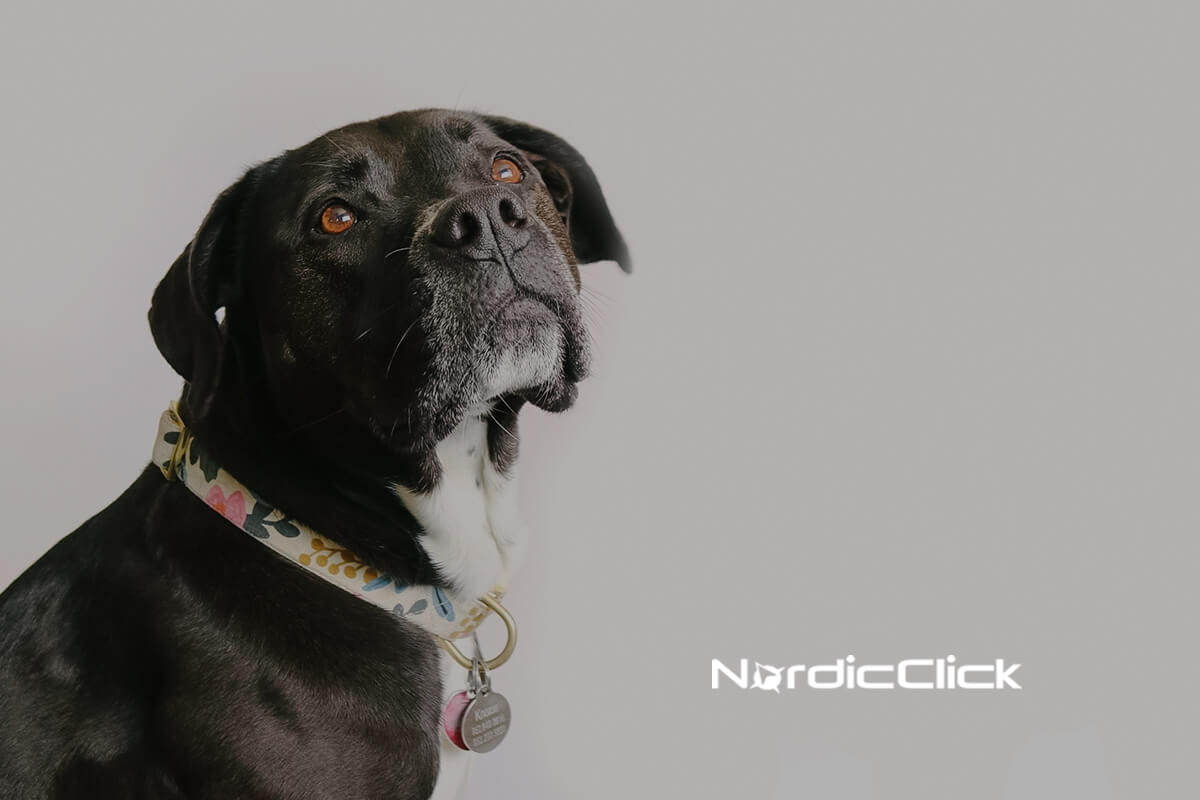Dear Knoxie:
I’m in marketing for a pet store and we use paid search to drive traffic to our e-commerce site. Our sherpa dog beds are a big seller. I wanted to see what our ad looks like, so I typed “dog beds” into the Google search bar. To my dismay, we didn’t show up. If my boss sees this, it’ll be ruff… Why isn’t my ad showing? What can I do?
Sincerely,
Frustrated Frannie
Dear Frustrated Frannie:
No need to return to your boss with your tail between your legs! Here are four logical reasons why your ad isn’t showing up and what to do about them.
1. Daily Budget
I’ve listed this first because it should be the first place you look. Did you run out of budget for the day in that campaign? If that’s the case, you need to either increase your budget or wait for tomorrow.
Tip: Look at “Lost Impression Share Due to Budget” in Google Ads to see how often your ad was not showing because you were out of money. The higher the percentage, the more limited your performance is by inadequate funds.
2. Ad Rank
Maybe you are showing up, but it’s on page two or three of Google. In that case, it’s likely due to low Ad Rank.
Two things go into Ad Rank:
- How great (or not so great) of an ad experience you offer (your Quality Score)
- What you’re willing to pay for a click (your bid)
If you’re not showing up as high as you hope, take a look at the elements that make up Quality Score. How’s your landing page experience? Are people likely to click on your ad, based on your use of extensions? Is your ad relevant to the keyword? These three elements are all scored out of 10 on an individual keyword level. Check out your scores and see if anything is holding you back (or in this case, down). (For more on quality score, check out this helpful article.)
If your Quality Score is ~7 or higher but you still have low ad rank, you may be falling behind because you’re not bidding high enough. As more competitors enter the auction, the price to play will rise, too. Check the Auction Insights report to see if any new players have entered the market or if any existing players have kicked things up a notch.
Tip: Look at the metric “Lost Impression Share Due to Rank” in Google Ads to see how often your ad was not showing because you didn’t rank high enough. The higher the percentage, the more work you need to do to improve your quality score.
3. User Signals and Bidding Strategies
When deciding which ads to show for a specific search at a moment in time (called an auction), Google takes into account who is searching to serve the best ad to that person. When you hit “enter” on that search, the machine analyzes the actual search query along with contextual signals like:
- Time of day
- Browser
- Operating system
- Device
- Location
- Language
- Demographics
- Remarketing lists
… to serve you the results that are most likely to provide what you’re looking for.
This is especially important to consider if you’re using Smart Bidding strategies like Target CPA, Maximize Conversions, etc. in your campaigns. These bidding strategies lean on machine learning to adjust your bid in light of your campaign’s goal, as determined by the bidding strategy you set.
For example, say you’re using Maximize Conversions. You’ve essentially told Google, “Here’s $100. I want you to use it to get me as many conversions as possible today.” So Google says, “Challenge accepted.” When someone searches for a keyword you’re bidding on, Google analyzes user signals to determine how likely this person is to convert and adjusts your bid accordingly. Therefore, if conversion is not likely, you might not show up at all.
So, consider this: if you’ve done test searches before and have not clicked on your ad when it shows (of course you wouldn’t – it’s on your dime), Google notes that you don’t find this ad relevant. This makes them less likely to show it to you in the future, which might be why you don’t show up when you search for those keywords.
Tip: If you must search for yourself, I suggest an incognito search. An incognito search hides your identity/search history from Google, so it’s more of a clean slate search. Still, be careful of doing this too often. Repeat searches without clicks for a specific keyword can still hurt your quality score and hinder ad rank.
Tip: If you just need to see what the ad looks like, use an ad preview tool like this one.
4. Changing SERPs and Search Intent
The search landscape changes all. the. time. Remember when ads used to show up in a column on the right-hand side of organic results? Or the days before featured snippets gave you the answer without having to click? Or how about when search ads were shorter?
I could go on, but suffice it to say: Google loves rearranging the furniture. Some changes occur across the boards, while others impact specific queries based on search intent.
Let me show you what I mean.
How Search Intent Impacts Search Results
I searched for “pet store near me” from my phone and this is what I see:

The intent behind the words I typed into Google indicates I’m trying to go somewhere. So, Google gives me a map and some helpful location info along with it.
Later, I searched for “sherpa dog bed” from my desktop and this is what I see:

The intent behind this search is commercial. I’m ready to see/compare products so I can make a purchase soon. Google gives me product ads in the Shopping area at the top, some image results, organic links to some big brands like Wayfair and Amazon, and a few map results if I want to go buy one in a store.
Then, I searched for “best dog bed” from my desktop and this is what I see:

Very similar results to the “sherpa dog bed” search, except now I also see a featured snippet and some articles about the best dog beds of the year.
Did you notice that in these last two searches there were zero text ads showing? People who are ready to buy want to see and compare products more than they want to read words. To make this as easy as possible, Google decides to show visual paid and organic results instead of text-based.
If in your search you didn’t see any ads show up, you can rest assured that this is no fault of yours. Google has decided to only show organic results, so there is no way you could have shown up.
Tip: To cover your bases in an ever-changing search landscape, make sure you’re using all the paid ad formats relevant to your business (e.g. Shopping and Search) as well as optimizing to show up organically wherever possible (e.g. main search results, local results, image results, featured snippets) for the keywords that matter to you. This way, if Google only shows Shopping ads for “sherpa dog bed” for example, you have a greater chance of showing up on the SERP when it matters. (More tips on Google Shopping here.)
I get it – chasing after Google sometimes feels as vain a pursuit as the squirrels in my yard. Hopefully these four explanations bring clarity around what is in/out of your control and equip you with tools for improvement.
Your PPC Pal,
Knoxie
P.S. Wish someone else was managing your PPC campaigns? Take a look at our Paid Search capabilities to see how NordicClick can help.
P.P.S. Kindly typed by Katie Kennedy because paws.
